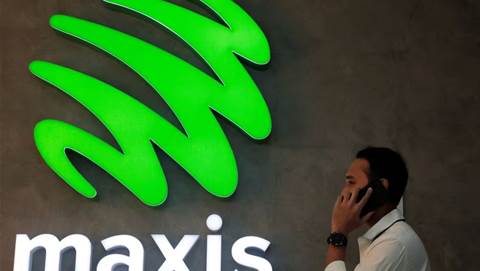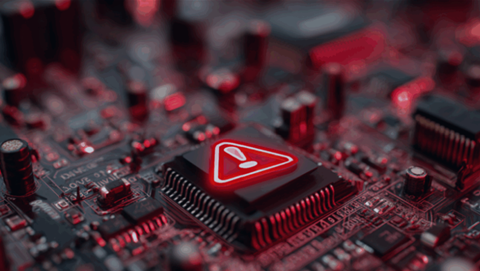Seaco, an international shipping container lessor, has integrated a cybersecurity platform to consolidate security telemetry across IT infrastructure, including mobile devices, cloud environments, servers, endpoints, and containers.
This helps unify security operations on a single platform to streamline threat management and use AI to enhance decision-making.
Seaco’s CIO, Damian Leach told iTnews Asia, that the previous approach led to fragmented telemetry from disparate systems, making it difficult to enforce consistent security controls and policies.
The lack of centralised security slowed response times for vulnerabilities and risk assessment, said Leach.
After evaluating vendors, the company has decided to use Trend Micro’s cybersecurity platform - Vision One – for consolidation.
Leach mentioned that with this consolidation, Seaco has automated threat detection and response, reducing mitigation time.
Currently, the company has operations across 23 offices and integrates with approximately 500 depots and ports worldwide.
Trend Micro’s managing director, David Ng, said ransomware remains a major threat as earlier attackers needed time to research victims and craft undetectable malware, but now AI automates processes to make attacks efficient.
Ng mentioned that the Vision One platform uses AI to collect and analyse security data across Seaco’s IT infrastructure, providing a view of potential risks.
This helps monitor overall risk exposure while investigating specific endpoints or users when needed, said Ng.
Eliminating manual data compilation from six platforms
Since implementing Trend Micro’s solutions, Seaco can generate real-time cybersecurity risk reports for company officials and the board, eliminating the need to compile data from six platforms manually.
Leach said, “With Trend Vision One, compliance and reporting have become efficient, improving communication with auditors and internal stakeholders.”
The solution has reduced noise in threat detection.
“Previously, excessive telemetry from platforms made it hard to separate real threats from background alerts. For instance, Seaco’s two AWS clusters - one in Singapore and another elsewhere - produced unnecessary alerts from an offline disaster recovery (DR) environment,” said Leach.
Vision One helps prioritise critical systems, allowing the security team to focus on real threats and improving response times.
The platform strengthens Seaco’s cybersecurity and compliance efforts.
It enables real-time benchmarking against standards including ISO 27001 (information security standard), NIST, and MITRE (cybersecurity frameworks), which previous tools did not support.
Leach mentioned the team evaluated vendors based on end-user experience, cost, and product coverage across cloud endpoints, network servers, and mobile security.

Many vendors are specialised in specific areas - endpoint security, mobile, or servers - but only a few offer comprehensive coverage.
- Damian Leach, CIO, Seaco
As a multi-cloud organisation using AWS and Google Cloud, Seaco required a security partner capable of managing risks across cloud platforms.
According to Leach, Seaco's existing relationship with Trend Micro and its strong R&D capabilities made it the preferred choice.
Leach mentioned, “The company is operating almost entirely in the cloud, and by the end of Q2 this year, it will be 100 percent cloud-based. This made it easy to transition existing telemetry data from core systems into the new platform with minimal effort.”
Integration with existing security operations center
Seaco follows a regional security model to counter rising cyber threats, with a cybersecurity lead in Singapore and regional leads handling incident triage and reporting.
As the company expands technology landscape, including multi-cloud adoption, this structure alone is not scalable.
According to Leach, Seaco integrates Trend Micro Vision One into its 24/7 SOC (security operations center), ensuring continuous monitoring, and real-time reporting and streamlining threat detection and response.
Trend Micro’s Security Workbench – a tool for monitoring and responding to security alerts - enables incident containment, while AI-driven insights automate security actions.
The SOC plays a key role in supporting Seaco’s ISO 27001 certification.
Mentioning the structured rollout, Leach said, “The company has established a dedicated working group to oversee the implementation process, track progress, and ensure issue resolution. So far, the team hasn’t faced any significant challenges.”
The in-house technical expertise enables Seaco to manage cloud environments, including IaaS components, ensuring easy integrations and efficient troubleshooting.
Building data lakehouse for advanced analytics
Seaco is working on ten digital transformation initiatives, focusing on building a data lakehouse and adopting multi-cloud and AI.
It is developing a data lakehouse to consolidate structured and unstructured data into a single, accessible platform.
Leach said, “Historically, we faced challenges in providing the business with real-time, comprehensive data for decision-making.”
Existing tools like Excel and SAP Business Warehouse limited the ability to process large datasets, only allowing reports on 60,000 lines of data, said Leach.
He added that with the data lakehouse, the team can handle 500 to 600 million rows of data and run multi-dimensional queries – enabling long term decision making and predictive analytics.
It will serve as the core foundation for AI initiatives, supporting machine learning models with high-quality data.
Additionally, the team is integrating unstructured data, including contracts and depot images, into cloud storage.
“By applying computer vision AI models and generative AI techniques, we can extract and summarise insights from data,” said Leach.
The company leverages multi-cloud environments to maintain flexibility and capitalise on AI innovations from different hyperscalers.
Currently, Seaco has four AI use cases in production and six in pre-production, using synthetic data in sandbox environments.
Additionally, the company integrates AI-driven capabilities into existing products to enhance security and operational efficiency.
For example, using infused AI in telemetry helps summarise threats and recommended security actions.
It is also developing AI solutions to address industry-specific challenges.
“We build proprietary AI-driven tools using a mix of open-source frameworks and hyperscaler technologies,” said Leach.
Seaco also adopts off-the-shelf AI solutions where necessary, leveraging tools including AWS SageMaker for forecasting rather than building models from scratch, he added.









